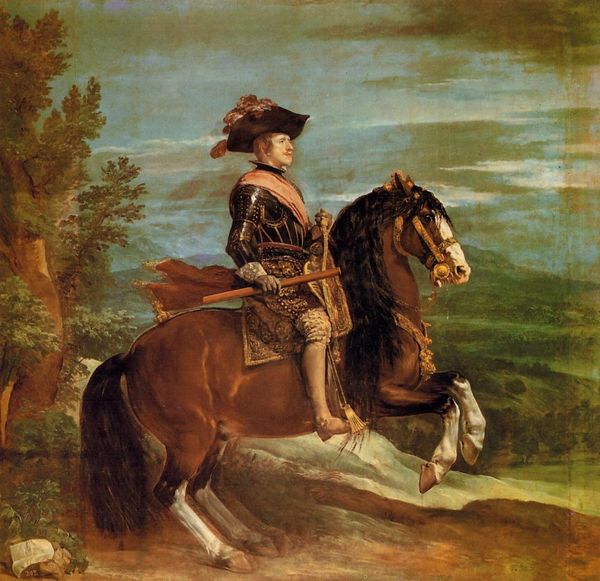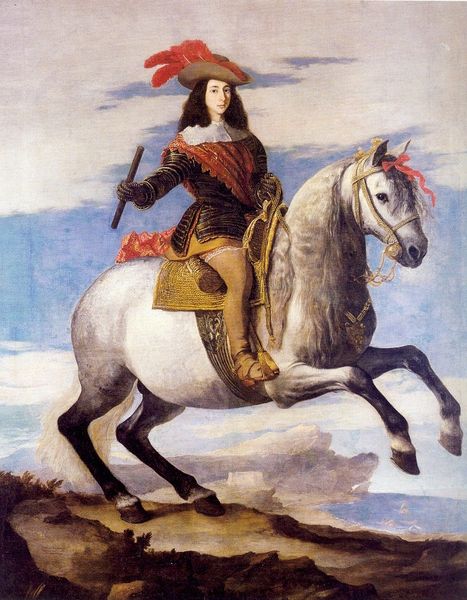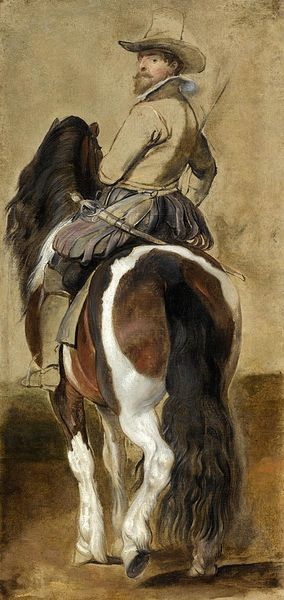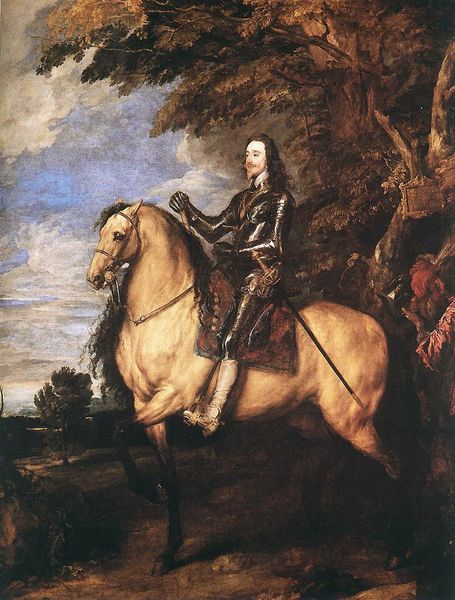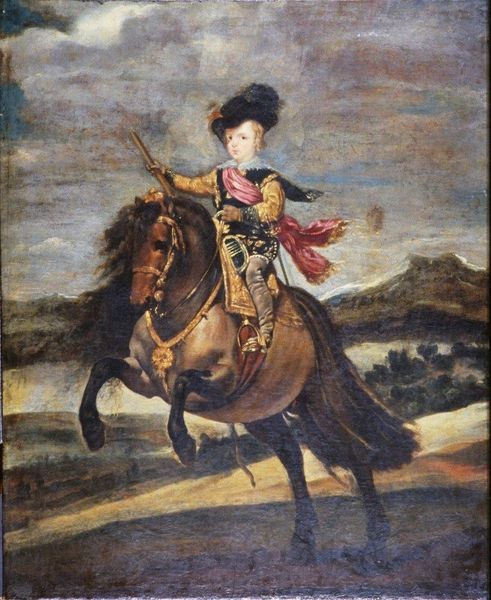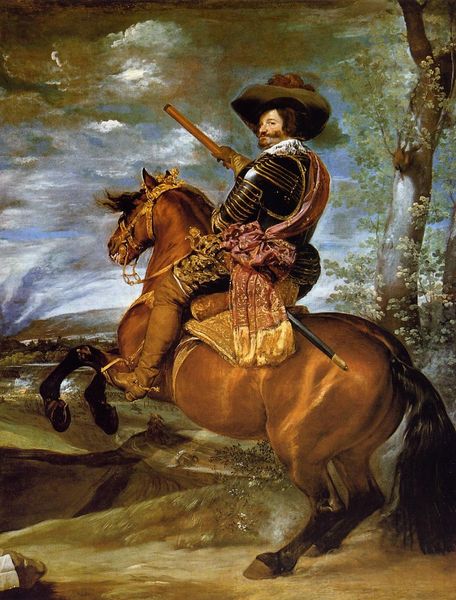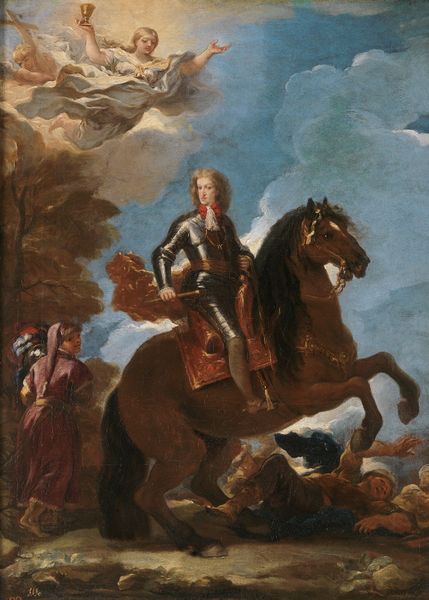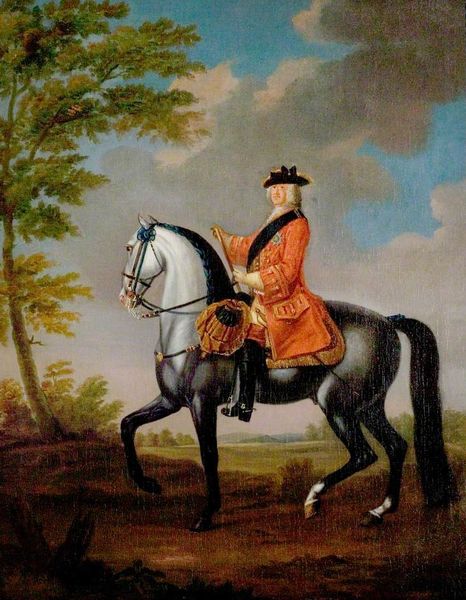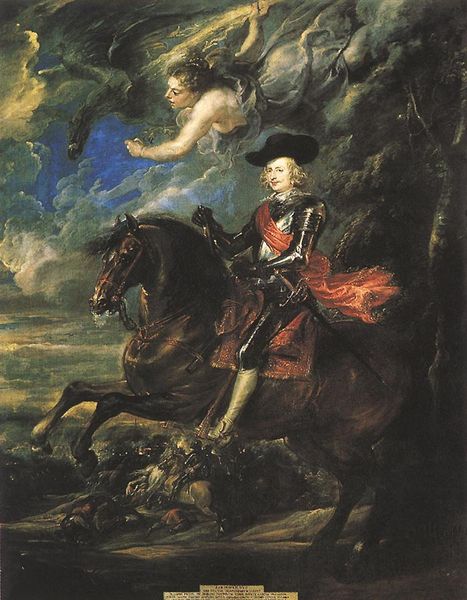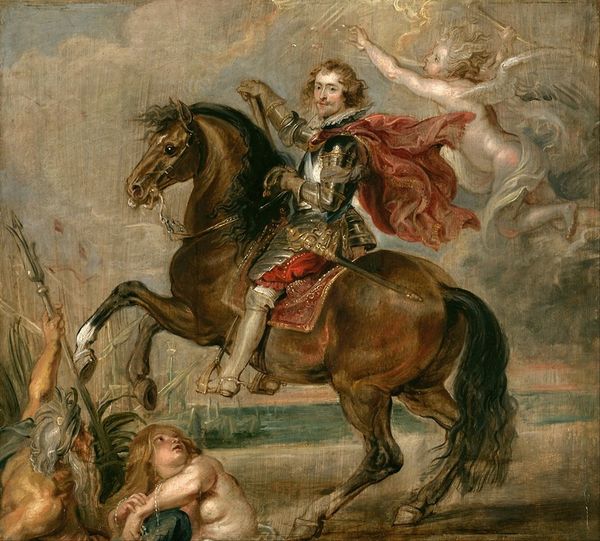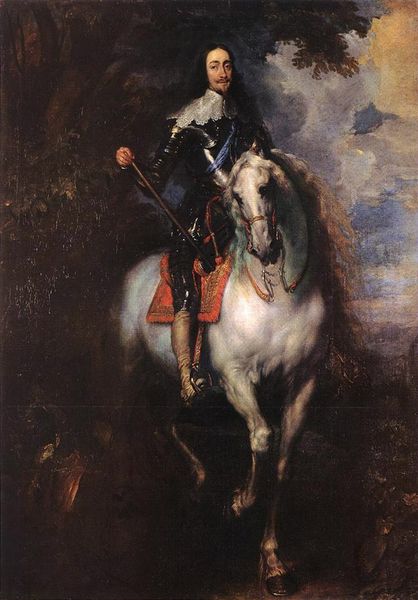
Dimensions: 82.5 x 61.7 cm
Copyright: Public domain
Curator: At first glance, it's the atmospheric conditions that strike me – those storm-laden skies looming over the pale horse and its elegant rider. Editor: Indeed. Let’s consider this captivating artwork a bit more formally. We're looking at Francisco de Goya's 1783 "Portrait of Maria Teresa de Vallabriga on horseback," currently residing at the Uffizi Gallery. He worked with oil paint here, obviously. Curator: Yes, and consider the equestrian portrait as a signifier itself. It's so potent, isn’t it? Historically it has signified power, control, aristocracy… Maria Teresa is riding, literally elevated. However, her story is fascinating, especially because of who she wasn't. Editor: Interesting…elaborate? Curator: The fact that Maria Teresa, though married to royalty, was not of royal birth and not acknowledged at court, significantly influences how we interpret this painting. Despite the outward symbols of status—the beautiful horse, her fashionable attire—her marginalized status subtly undermines any clear-cut message of power. The turbulent landscape also speaks to the tempestuous dynamics of the Spanish court during that time. Editor: And Goya certainly understood tempestuous dynamics! Looking closer, you see how he uses light. The way it strikes Maria Teresa and her horse seems almost like a beacon in the rather dark and moody landscape behind. It pulls your eye right in. It's less about rigid representation and more about atmospheric evocation, playing with a very deliberate tonality. Curator: The mountains could even be read as symbols of the obstacles Maria Teresa faced. Goya was always so keen on infusing psychological depth, beyond just the surface appearance, and this landscape motif heightens our insight into that internal narrative. Editor: Absolutely. It’s a work filled with tension, carefully considered composition, and thoughtful manipulation of space and form. I can appreciate the artist's eye so much more having taken the time to analyze those finer elements. Curator: It certainly underscores how portraits are not mere recordings but very complex negotiations of status and story. The horse too is not only a conveyance, it symbolizes also how society, both animal and human, are being guided, a reflection of social stature and unspoken longing.
Comments
No comments
Be the first to comment and join the conversation on the ultimate creative platform.
